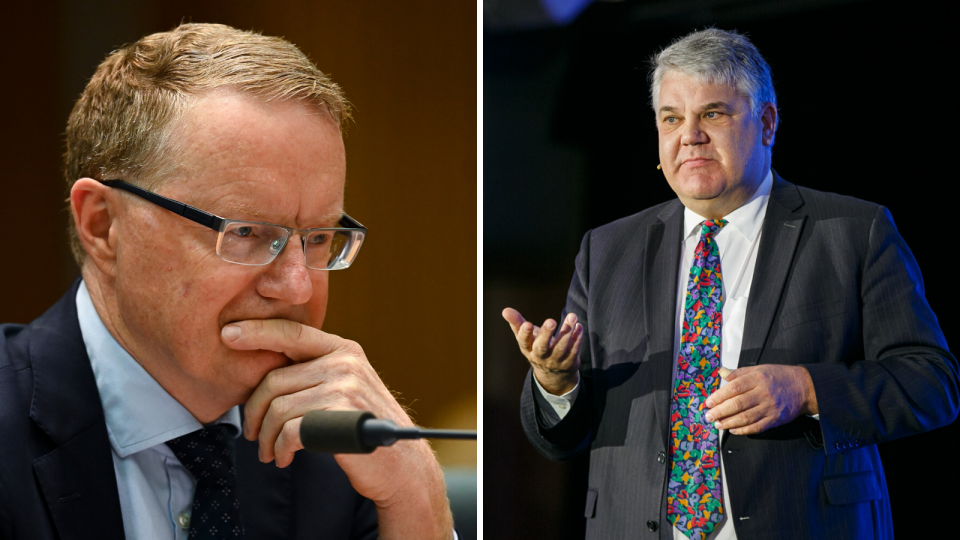Look at the facts: Interest rate cuts work

As the Reserve Bank of Australia prepares for its next meeting on 4 February and it set to consider cutting the official cash rate to a fresh record low of 0.5 per cent, there is a vocal cabal publicly saying low interest rates not only don’t work in reflating the economy, but actually harm the economy by inflating asset prices.
As my children might say: yikes!
One high-profile commentator recently wrote: “It’s [a further interest rate cut] unlikely to do any good, and could do more harm than good. It’s hard to see that yet another tiny interest-rate cut will do anything of consequence to stimulate spending”.
More from The Kouk: Australia's much-needed economic pick-up has been choked by smoke and fire
More from The Kouk: The real test for Scott Morrison in 2020
More from The Kouk: What's ahead for the Australian economy and markets in 2020
Akin to climate change deniers, this line of argument risks undermining confidence in an economy where business can and should be encouraged to borrow money easily, with a low hurdle for the return on new investment, where they have an improved cash flow on existing loans and get a benefit from an ultra competitive exchange rate.
Householders also benefit when interest rates are low, from improved cash flows on existing debt and they also can look to borrow money at a more favourable rate to fund their own investments and spending.
To say low interest rates don’t work... is like saying all the billions of litres of water poured on the bush fires didn’t work
RBA research shows any negative effects for savers from low interest rates are swamped by the benefits to those with debt or looking to spend and invest more.
This knocks on the head the chatter that there is a net negative impact on the economy from savers getting a low yield on their deposits when rates are so low.
To say low interest rates don’t work because the 0.75 per cent cash rate has not driven economic growth back to trend, to full employment and the inflation rate to the middle of the target is like saying all the billions of litres of water poured on the bush fires didn’t work – after all 10 million hectares of land have been burnt and more forests are still burning despite that water.
If, however, more water had been poured over the fires, or there was pre-emptive watering, the fires would have been much less extreme.
The monetary policy deniers also have a disturbing hint of climate change deniers arguing that if the impact is so small with a 25 basis point cut, why bother? “A 25 basis points rate cut will not solve the economies woes”, is the common refrain.
According to the climate change deniers, Australia makes up just 1.3 per cent of global carbon emissions – cutting them to zero will make no difference to global temperatures, according to them.
To be sure, monetary policy has had difficulty reflating the Australian economy. But anyone looking back at RBA policy over the past few years would agree that this is because the RBA dithered in delivering easy monetary policy (not putting enough water on the fires) rather than the fact that monetary policy no longer works.
It is also the case the easier monetary policy was fighting against an extraordinary fiscal policy austerity from the government, keen to move the budget to surplus, even in the wake of sluggish economic growth and stubbornly high unemployment.
Prime Minister Scott Morrison and Treasurer Josh Frydenberg have sucked tens of billions of dollars from the economy is their budget surplus quest, an act that has cut close to 1 per cent off GDP growth in 2018-19 alone.
Those arguing against further rate cuts suggest with low interest rates prevailing around much of the world, there is no real impact on Australia if we have low rates. The line goes that if every country is implementing low rates the impact on the Australian dollar is muted.
I wonder if these commentators ever look at the data. The Aussie dollar, for those who bother to look – is hovering around 59 points on the trade weighted index. This is a level that, with the exception of a few weeks during the GFC, is near a 18 year low.
This lower Australian dollar is delivering in spades to the economy. Australia is running massive international trade surpluses – it is even running a current account surplus, something not seen since the mid 1970s.
Another smack down for the monetary policy deniers as exports boom to record after record.
Then there is the argument that low interest rates will feed into asset prices (mainly housing) and that this is “an appalling development” because house prices have started to rise again in Sydney and Melbourne.
Huh? What about house prices in the rest of Australia, where borrowers pay the same interest rates as those in Sydney and Melbourne?
Perth and Darwin house prices, for example, are down 20 per cent and more over the past 6 years or so – have lower interest rates driven house prices lower or higher in Perth and Darwin?
Clearly, factors other than interest rates drive house prices in the long run.
And if anyone cares to look, Sydney and Melbourne house prices are still, in early 2020, below the peak levels in 2017.
Suffice to say, monetary policy still works and easier monetary policy will deliver stronger economic growth if implemented with gusto.
The RBA needs to play its part in implementing monetary policy that will lift growth and inflation and lower the unemployment rate.
Make your money work with Yahoo Finance’s daily newsletter. Sign up here and stay on top of the latest money, property and tech news.

 Yahoo Finance
Yahoo Finance 